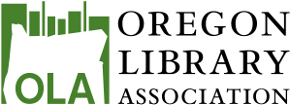|
April 2010 Dear Superintendent/Principal: Last year, the Oregon State Legislature passed House Bill 2586, which as you may already be aware, passed into law a new element in the Continuous Improvement Plan, whereby school districts shall include goals to implement a strong school library program. What is a strong school library program? In response to the new law, the Oregon Association of School Libraries (OASL) created a Position Statement to outline characteristics of a strong school library program based on school library research and best practice. National and international studies repeatedly demonstrate a positive impact on student learning and achievement when a strong school library program is in place. These documents reflect current Oregon Administrative Rule for Media Programs (581-022-1520), Oregon's Quality Education Commission's 2008 Quality Education Model (QEM), and the 2008 QEM & School Libraries Final Report, published by the Oregon State Library, wherein recommended minimum criteria for quality school libraries are identified. The mission of OASL is to provide progressive leadership to ensure that Oregon students and educators are effective users of ideas and information, and to pursue excellence in school library media programs by:
In preparation for completing the school library portion of your district CIP, consider reviewing the linked documents. We welcome your questions and the opportunity to help you build a strong school library program in your district. Sincerely,
At most grade levels, when the confounding effects of poverty are taken into account, library media programs exert a measurable impact on test scores while other school variables, such as per pupil expenditures and teacher-pupil ratio do not. (Lance, 2001) |
